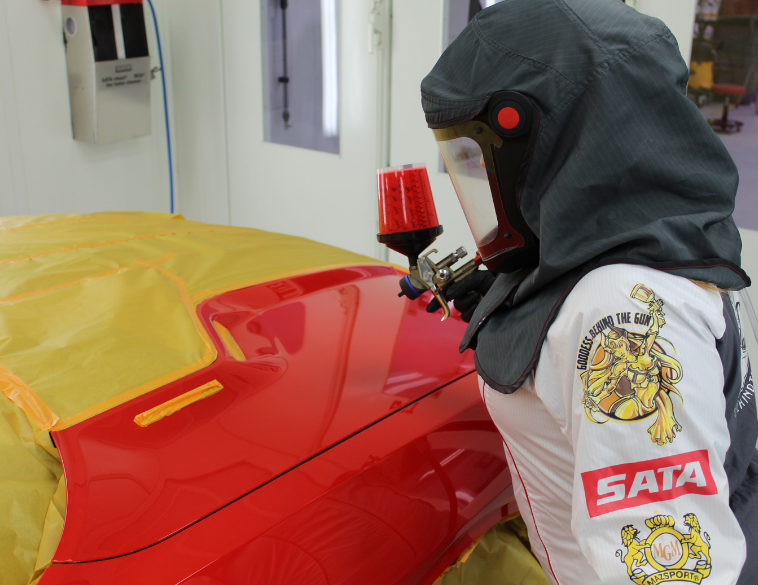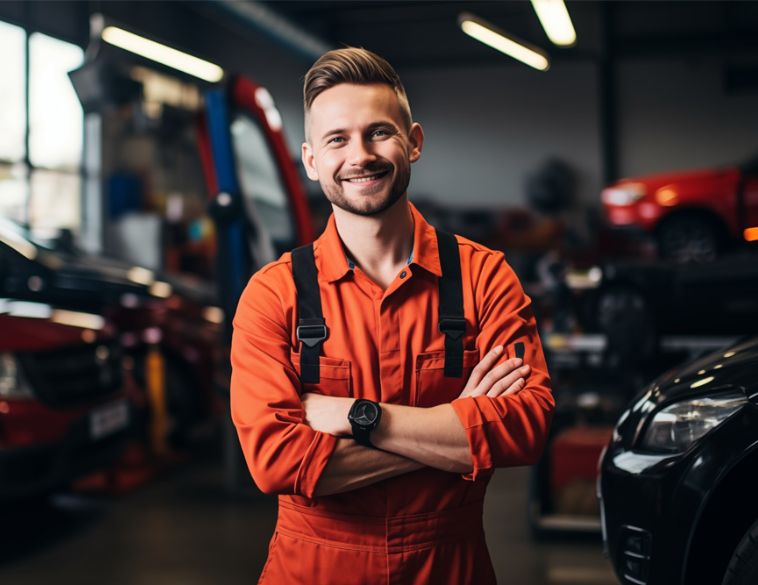Knowing spray requirements and using quality guns is key.
Back in the early 1990s, the State of California came up with a transfer efficiency requirement for spraying coatings and adhesives. Designed to meet stringent air quality requirements, this led to the creation of High Volume, Low Transfer spray technology and a National regulation standard for both the U.S. and Canada. In essence, when you are spray painting a vehicle or a panel, this National rule requires a transfer efficiency of 65% or higher, meaning that 65% of the material from the gun is transferred directly to the panel or surface you are spraying and not dispersed into the air or through a ventilation system in your spray booth.
Spray technique
Depending on the type of painter you are, using HVLP technology can be easy or very difficult. If you’re accustomed to spraying quickly, it can be very challenging, since this technology requires the painter to spray slowly across the panel to achieve that high transfer rate. To help combat this issue, SATA developed Reduced Pressure (RP) technology. With this you are essentially performing the procedure the same way as HVLP (with 20-29 psi of pressure flowing into the gun and achieving 10 psi at the cap of your spray gun). The difference is in the way the material atomizes to achieve that transfer efficiency rate of 65% or higher, as laid out by the National standard.
Paint manufacturers provide instructions to achieve that 65% or higher transfer rate based on the air pressure flowing through the gun, as well as the distance and angle from which you are spraying the desired object or surface. They will also tell you that when performing the work using a certain gun, there are specific fan control requirements. This helps ensure that the paint manufacturer provides the correct gun setup when spraying to ensure the painter is achieving the highest transfer efficiency rate possible with their specific material.
When it comes to cups, using a vented hard plastic or reusable cup, allows the gun to operate as efficiently as possible. Therefore, in order to achieve the greatest transfer efficiency on any gun, follow the paint manufacturer’s technical data sheet which outlines how to specifically spray their material.
Wasting money and material
The problem is that this information is not generally well known and given the cost of paint and refinish solutions today, many painters and collision centres are wasting thousands of dollars in paint when spraying in the booth.
Another big concern is HVLP testing and compliance. To begin with, some manufacturers are no longer having their guns tested. Additionally, cheaper, offshore sourced guns often have HVLP labelling but these guns have never been tested and so are not HVLP compliant even though they say that they are. Because of a lack of education in the industry, it can be very easy for an inspector to look at one of these guns and consider it compliant even though, in reality it is not. This is a major problem for our sector and currently, there is no way of detecting which guns are actually HVLP compliant and which are not.
In order to combat this issue here in Canada, there needs to be a focus on education, from governing agencies such as Environment Canada, through their inspectors, through the distribution channel of these products and down to the front-line in the collision centres. There are a lot of moving pieces required to make it work but this is what is needed to ensure painters are able to maximize spraying efficiency by using the right guns with the right material and set at the right level of atomization.
Ultimately, spraying efficiency boils down to solid education as well as spending a bit more money to ensure you have a quality gun that’s been HVLP tested and certified as well as using the right gun for the right material. Too often we see situations where old top-coat guns are used for spraying primer to achieve inferior results. This means that often, the shop has to spend excess time sanding, which wastes material and increases the risk of burning through the primer material into the substrate, compared to using a gun designed for primer. By using the correct gun, with the correct material and following the paint manufacturer’s requirements, you save a lot of material and a lot of time, with the end result being a far better-quality paint finish.

John Turner is General Manager for SATA Canada. You can reach him at [email protected]



